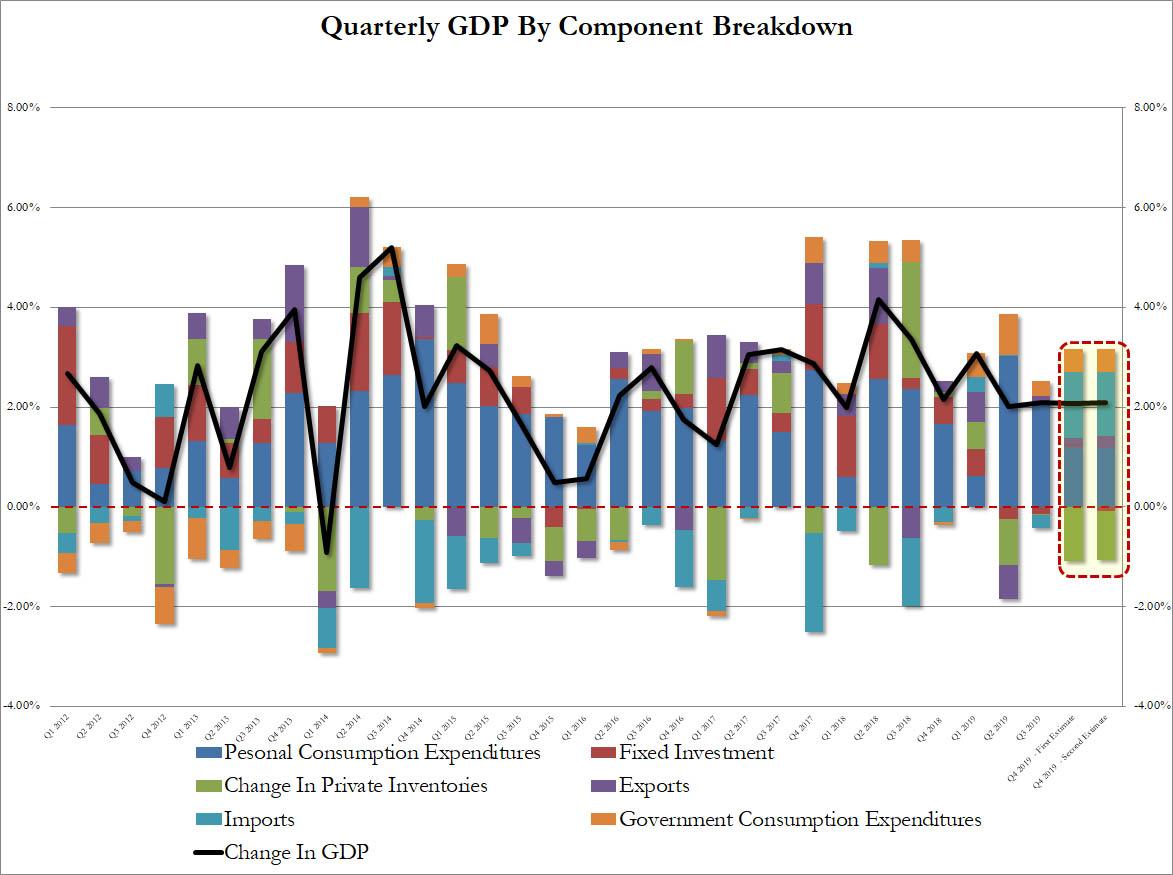Revised Q4 2019 GDP Print At 2.1%, Just As Expected
While nobody, absolutely nobody, cares about what happened to the US economy in the end of 2019 now that everything has changed in the first quarter of 2020 when China’s GDP is now expected to print negative, crushing global economic growth and slamming US GDP as well, moments ago the BEA reported its second estimate for Q4 2019 US GDP, and at least here there was no surprises, the number coming in unchanged vs the 1st esimtate at 2.1%, and in line with expectations.
Similar to last month, the increase in real GDP reflected increases in consumer spending, government spending, exports, and housing investment, which were partially offset by decreases in inventory investment and business investment. Imports, a subtraction in the calculation of GDP, decreased as the US imported far less goods and services. The increase in consumer spending reflected increases in goods (led by motor vehicles and parts) and services (led by health care). The increase in government spending reflected increases in both federal as well as state and local government.
The decrease in inventory investment reflected a decrease in retail trade inventories (led by motor vehicle dealers). The decrease in business investment reflected a decrease in equipment (led by industrial equipment) and structures (led by mining exploration, shafts, and wells).
Looking at the variances between the 1st and 2nd revision, these primarily reflected an upward revision to inventory investment that was offset by a downward revision to business investment.
- Personal Consumption contributed 1.17% to the bottom line GDP print, down modestly from 1.20% in the first estimate. On an annualized basis, Personal Consumption rose at a 1.7% rate, in line with expectations.
- Fixed Investment was revised lower, from 0.01% to -0.09%
- Changes in private Inventories subtracted -0.98%, slightly less than the -1.09% last month
- Net trade added 1.53%, just above the 1.49% reported last month, and contributing roughly 75% of the bottom line GDP, most of it on the back of the plunge in imports.
- Government consumption was basically flat at 0.46% vs 0.47% reported in the first reading.
The Fed got further leeway to cut rates when core PCE q/q rose 1.2% in 4Q after rising 2.1% prior quarter, and below the 1.3% estimate. Overall, the GDP price index rose 1.3% in 4Q after rising 1.8% prior quarter.
Looking at the full year data, for 2019, real GDP increased 2.3 percent, compared with 2.9 percent in 2018.
Increases in consumer spending, government spending, business investment, and inventory investment were partially offset by a decrease in housing investment and an increase in imports.
Prices of goods and services purchased by U.S. residents increased 1.5 percent in 2019, compared with an increase of 2.4 percent in 2018. Excluding food and energy, prices increased 1.7 percent after increasing 2.3 percent.
Overall, an unremarkable print, and largely meaningless now that everything has changed due to the coronavirus pandemic.
Tyler Durden
Thu, 02/27/2020 – 08:44


